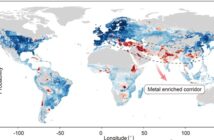The Game & Wildlife Conservation Trust (GWCT) is urging farming families to get involved in the Big Farmland Bird Count (BFBC).
This annual national census of farmland birds has provided data for the last decade on which species are in the most danger. The 2025 edition will run from the 7th to the 23rd of February, with the aim of not only providing a snapshot of the bird population on farms but also raising awareness of the role of farmers and land managers in conservation efforts.
In the hope that farmers and landowners can get the next generation involved the Trust has updated its website with new guides and countsheets.
TV presenter and farmer Adam Henson highlighted the importance of the Big Farmland Bird Count by featuring it on BBC One’s Countryfile earlier this year.
He says: “The UK has lost more than 70 million wild birds over the last 50 years, with over 60% of farmland birds affected. Farmers have the opportunity to be at the forefront of any efforts to restore those populations.
“Nature-friendly farming is the way forward, and to make sure we’re getting it right, providing the best habitats and support for our farmland birds, it is important to keep records.
“Taking part in the Big Farmland Bird Count helps us do exactly that, which is why I will be taking part next year.”
Last year, nearly 395,000 birds were spotted across 1,721 surveys, with the most common being starlings, woodpigeons and fieldfares. A total of 140 species were recorded, with 27 being red-listed, totalling 140,000 birds.
The most noted red-listed species were starling, linnet, fieldfare and lapwing, while the rarest sightings were of snow bunting, rock pipit, merlin, greenshank, golden eagle and Bittern.
Nearly 80% of farms recorded populations of blackbirds, robins and woodpigeons.
Dr Roger Draycott, from GWCT, says: “The BFBC is the first and only UK-wide citizen science project to involve land managers in monitoring the state of farmland birds.
“Since the count started in 2014, it has helped us understand how wildlife is doing on our land, and it gives us a national snapshot of the state of nation when it comes to our farmland birds.”
“Farmers, their children and grandchildren can make a difference by taking part. By spending just half an hour in one spot on your farm or shoot, counting the birds you see and submitting your results to the GWCT, the results help us build a national picture of which species are benefiting from conservation efforts, and which are most in need of help.”




